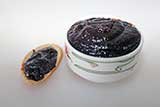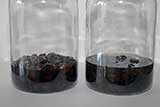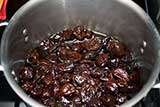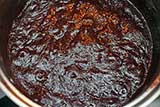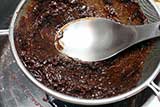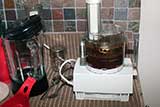Meats and Sausages
Prune Butter
Prune butter from dry prunes has a strong flavor and is faster to make than using fresh plums. Sugar is often left out as prune butter tastes delicious without it.
- Dry, pitted prunes 500 g (17.6 oz)
- Water, 750 ml (3 cups)
- Cinnamon, 1/2 g (1/4 tsp)
- 1/2 pint glass jars
1. Soak the prunes for 12 hours in water. They will absorb water and expand in volume.
2. Cook the prunes until soft.
3. Strain the pulp and juice through a medium size sieve.
4. Place in a large pot and bring to a boil. Continue cooking at low heat, stirring often.
5. Add cinnamon and keep on cooking. Test for doneness: place a small quantity of the butter on a plate. When a rim of the liquid does not separate around the edge ofthe butter, it is done.
6. Fill sterilized jars with hot prune butter and tighten the lid.
7. Process for 10 minutes in a boiling water bath canner.
8. Remove jars and leave undisturbed for 12 hours.
NOTE adding sugar is optional. About 50 g (2 oz) is plenty.
Fast Method
A. Soak prunes for 12 hours.
B. Blend prunes in a food processor.
C. Add cinnamon and cook on low heat stirring often. After 30 minutes test for doneness: place a small quantity of the butter on a plate. When a rim of the liquid does not separate around the edge of the butter, it is done.
D. Pack in clean jars and process for 10 minutes in a boiling water canner.

